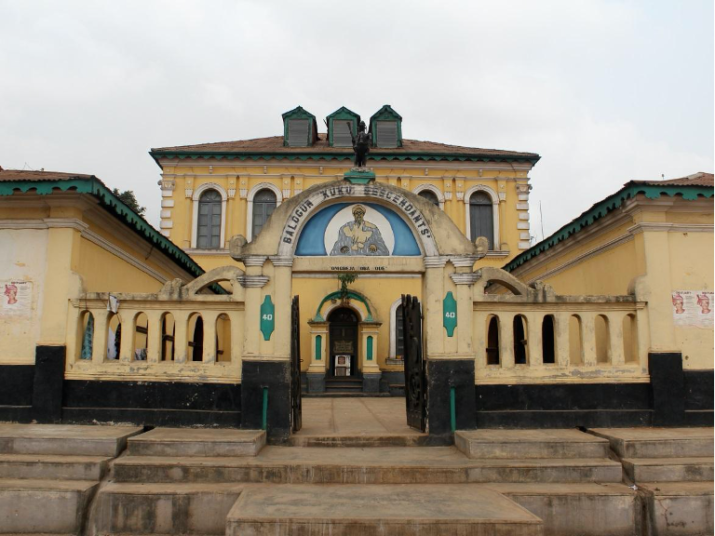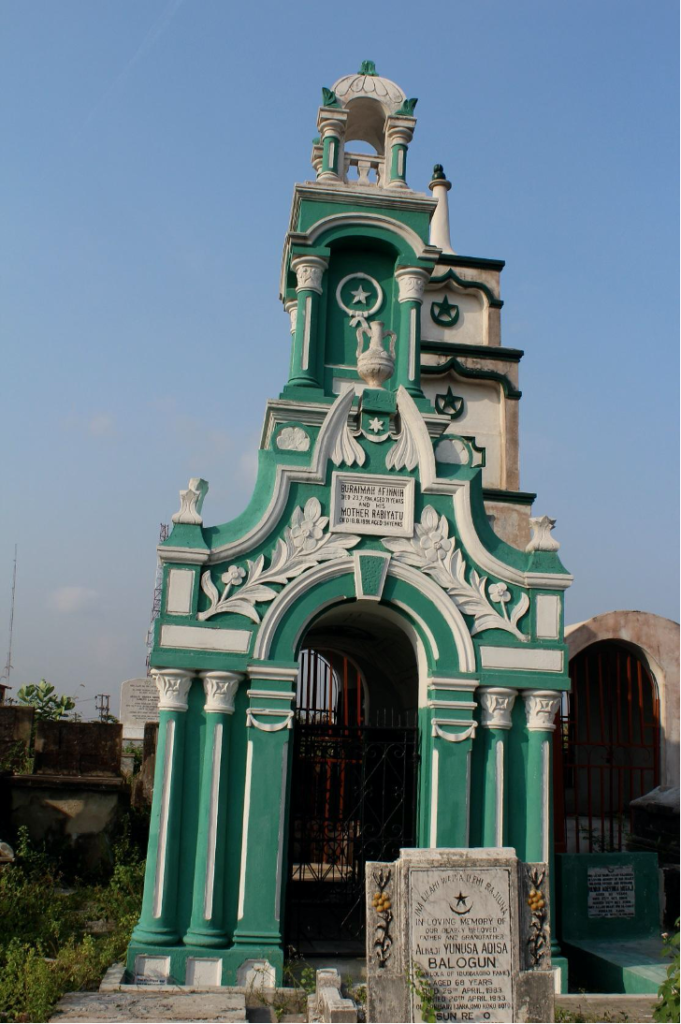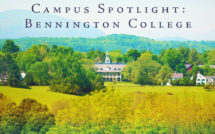
The Burden of Freedom: Therapeutic Architecture as Self Fashioning in the British Protectorate of Lagos (1830s-1900)

This is part of our special feature, Networks of Solidarity During Crises.
At times, architecture is a response to an existential crisis—especially if one is in dire straits in a European colony. All the more if, perchance, one had the ill fortune of being enslaved. What follows in this article is the harrowing as well as triumphant phenomenon of former slaves of African descent who grapple with the psychological need to belong to a particular place that they had just resettled in. Their approach was multi-pronged, involving transforming the region’s architecture as well as its names. Place names are not pulled out of the air; names of historical kingdoms of renown are used as a spiritual anchor to ensure that former slaves were connected to prosperous and strong nations of the past—in a manner to project that such people were the direct descendants of warriors. Ironically, the verbal creation of place occurs in both the places the ex-slaves relocate to and the places they left behind in the Americas, and this essay also purports to show the ways in which the newly freed individuals employed a type of therapeutic transforming of both their former abodes—Brazil, a Portuguese colony fraught with hardship for slaves—and their new homes in British Protectorate of Lagos in West Africa.
The following anecdote will serve as a prolegomenon to the topic under discussion. It illustrates the ways in which the Atlantic Slave Trade impacted the psychological mind-set of former slaves, and perhaps served as part of the impetus for architecture that people like the individuals in the story would build in order to recreate their lives.
The story begins with a father and a son…
Two men of African descent (a father and son) set off for West Africa from Northeastern Brazil in 1874 or 1875. The older gentleman had been a slave, shipped off to Brazil in his youth, and was returning to the continent for the first time since his emancipation. His son, also a former slave, who was born in Brazil, was visiting the continent for the first time.[1] On getting to the Bight of Benin, a fierce argument erupted between the two of them on the issue of bowing to the sculptures of local deities they found when they disembarked. The father had, with glee, relished the opportunity of discarding the Catholicism of his recent past, a religion that every slave was baptized into, being subject to the Portuguese colony of Brazil. Worshipping local deities would, in the father’s estimation, complete his re-immersion into the world of his ancestors. However his son—devout Catholic that he was—recoiled with disdain at the prospect of being a devotee of local deities in Africa. The conflict between father and son resulted in both parting ways; the son joined the Catholic Archdiocese in Dahomey, while the father remained in the British Protectorate of Lagos. The anecdote is one of an infinite number of such stories of how Afro-Brazilian immigrants dealt with fleeing a place where they were under surveillance into a British occupied territory, where they were given the opportunity to rebuild their lives as free citizens.
The following reveals how two European colonies were transformed in name and architectural structure by those who had their freedom initially taken away. This essay aims to demonstrate that architecture was one of the primary tools that such people used to answer the perplexing questions that the aforementioned father may have dealt with, namely: “Who was I before I became enslaved?” and “Where do I belong?” Furthermore, this essay will also explore how the ex-slaves’ quest for rootedness was complicated, and even in some cases exacerbated, by the multi-national and -ethnic demographic makeup of British Colonial Lagos.
Nearly eight thousand Afro-Brazilians landed on the shores of the Bight of Benin between 1820 and 1899.[2] In 1880 alone, Lagos had three thousand two hundred and twenty-one Afro-Brazilians and Afro-Cubans as well as one hundred and eleven Europeans, out of a total population of thirty seven thousand, four hundred and fifty-eight residents.[3] The Afro-Brazilians’ funerary, religious, residential, and royal architecture in Lagos and the Protectorate were part of an enterprise that encompassed the South of the Gold Coast, Togoland, and Dahomey in West Africa.

Figure 1: Tomb of Rabiyatu and Buraimah Affinnih in Àbàrí Muslim cemetery, Lagos (Built at the turn of the 20thCentury). Source: Author, 2011.
The Lagosian Afro-Brazilians established commercial networks with their Gold Coast and Dahomian counterparts, and the construction of the El-Mina and Ouidah Catholic Cathedrals were some results of such partnerships.[4] Little is known about these two churches beyond the fact that two Lagos-based Afro-Brazilian master masons, Lázaro Borges da Silva and Francisco Nobre, worked on them.[5] Yet the breadth and variety of the Afro-Brazilians’ architecture in Lagos and Southwest Nigeria, and their impact on several societies in the two territories merits its own study. People design and create architecture for a variety of reasons including to seek solace. The Afro-Brazilians’ built environment in a British colony is no different and it shows not only the incalculable impact of the Atlantic Slave Trade and European colonialism on the migration and creative decisions of people of African descent in two continents, but also how certain individuals developed psychological ways to assert their humanity and even forge a new destiny.
Evidence of Afro-Brazilian travelers from Brazil to West Africa dates back to the latter half of the eighteenth century, but a surge in the exodus occurred after the Brazilian authorities quelled a major uprising in Salvador in 1835.[6] In the wake of this insurrection, also known as the Malê Rebellion, the municipal government deported two hundred instigators, both enslaved and freed Africans, to the Bight of Benin.[7] Furthermore, Bahia’s provincial magistrature passed a law that curtailed free Africans’ economic ascension and put all such individuals under surveillance. Hence, there arose an increasing number of Afro-Brazilians who applied for passports in Salvador and to a lesser extent in Rio de Janeiro. Their departures after the suppression of the revolt occurred in stages. In November 1835, the Brazilian slaver Felix de Souza agreed to help the Bahia State resettle intending emigrants in the Lusophone community in Dahomey. The second phase mainly consisted of men who in the 1840s went back and forth between Brazil and what the travelers called the “African Coast.” Lagos became the city of choice for the settlers two decades later.[8]
Some of these immigrants also left Lagos for Ouidah, Porto-Novo, and Agoue in Dahomey as well as cities such as Lomé in Togoland, and Jamestown, a borough of Accra in the Gold Coast.[9] In Lagos, the Afro-Brazilians, also known as “Àgùdà” lived in a district known as the Brazilian Quarter or “Pópó Àgùdà,” This section was built on large swaths of formerly uninhabited land gifted to them by the Lagosian King Kὸsọ́kọ́ in 1851.[10] Yet, these foreigners were one of many immigrant groups of African descent that lived in the city. There were ex-slaves from Liberia and Sierra Leone. The latter, whose ancestors were from the Iléṣà, Abẹ́ὸkúta and Ifẹ̀ kingdoms of Southwest Colonial Nigeria, were called the “Sàró,” a corruption of the name Sierra Leone: in 1880, one thousand five hundred and thirty-three of them lived in Lagos.[11] Their descendants in Lagos were also called Sàró. While the “Àgùdà” from Brazil spoke Portuguese, the Sàró were English-speakers like the Black Britons and Englishmen in Sierra Leone.
Between 1854 and 1857, the Christian Missionary Society and the British Government resettled one hundred and sixty-eight Afro-Cubans in Lagos.[12] The Lagosians also called these Spanish-speaking newcomers Àgùdà, obscuring the cultural differences between the Afro-Brazilians and the Afro-Cubans. And, as Solimar Otero has correctly noted:
Though the Brazilian cultural aspects tend to dominate some visible forms of Aguda social performance (like the Boa masquerade held in Lagos every year), the emergence of the Aguda culture represents a unique synthesis of many social and cultural diasporic groups.[13]
The Sàró and Àgùdà’s ancestral ties to Southwest Nigeria did not prevent the indigenous peoples from despising them. The historian Spencer Brown cites an instance when both groups had better relations with the British colonists than with each other.[14] Moreover, in one of his dispatches to Lord Clarendon, the Secretary of State for Foreign Affairs in London in 1854, Benjamin Campbell, the British Empire’s Envoy to the Bight of Benin (1853-1859), wrote:
The addition of these self-emancipated Africans from the Brazils and from Cuba to the population of Lagos is a great desideratum, as, by their habits of industry and their semi-civilized manners and condition, they form a good counter pose to the leaven of the Old Slave population of this place, as they will remain apart and unmixed with its old feuds and animosities.[15]
Still, the Àgùdà did not fare much better, as their clashes with Lagosians during carnival parades in the city indicate.[16]Such acts of violence, where indigenes of Lagos flung broken bottles at the Brazilian arrivals, erupted because the natives despised the foreigners’ public demonstrations on their home turf.[17] The relationships between the Àgùdà and the Sàró were not amicable either. The acute doctrinal lines that separated Catholicism and Protestantism played out on the streets of Lagos as well, where some Catholic Àgùdà and the Protestant Sàró came to blows.[18] Furthermore, the Muslim and Catholic Àgùdà had tense relations of their own because the Muslims had planned to kill the mulattos and Brazil-born blacks in the Malê riot of 1835 in Salvador.[19] Despite these tensions, the Àgùdà and Sàró still collaborated on the design and construction of mosques, palaces, houses, and tombs in Colonial Nigeria.[20]
Indeed, the persistent threat of attack by the native Lagosians caused the Àgùdà and Sàró to put aside their squabbles. And there were precedents for the incomers’ fears beyond those cited above. In 1853 for instance, Consul Campbell asked the Colonial Office for permission to protect 130 Brazilian new arrivals in Lagos from King Kὸsọ́kọ́.[21] The request was in response to the plunder of the visitors’ portmanteaux and murder of those who had resisted the onslaught by Kὸsọ́kọ́’s warriors.[22] In 1855, Antonio Òjó Martins, the chief of the Afro-Brazilian settlers, repaid Campbell’s goodwill by preventing an assassination attempt on the Consul’s life.[23] The Àgùdà-Sàró collaboration in aid of their mutual survival on the coast had a positive impact on their cultural lives; and the Sàró’s request for the Àgùdà’s expertise in architectural design and building construction, I argue, is an extension of this partnership.
Before the Àgùdà resettled in Africa, they renamed Brazilian neighborhoods after their hometowns in West and South Africa for nostalgic reasons. Examples include Ìjẹ̀ṣà-Tẹdo and Nago after the names of cities in Colonial Nigeria. Saúde, in the Nazaré borough of Salvador, for instance, was formerly known as Ìjẹ̀ṣà-Tẹdo in the Slave Trade era just like its older counterpart in Lagos.[24] Additionally, Candomblé, the Afro-Brazilian religion, has a temple in Salvador called Ilê Axé Opó Àfọ̀njá, which is translated as the “House of Power sustained by Àfọ̀njá” in honor of the Ọ̀yọ́ general who warded off the Fulani kingdom’s attempt to invade the Ọ̀yọ́ Empire in the nineteenth century.[25] These place-names attest to the manumitted people’s desire to claim West African polities and heroic personages as part of their history and heritage. Paradoxically, these settlers did the reverse when they established themselves in Lagos by, for instance, naming one borough Pernambuco, after a state in Northeastern Brazil.[26]
Understanding how migrants and natives reconstructed their pasts and construed their futures through the structures they built also provides the occasion to ponder new approaches to non-Western architecture given the paucity of written records. The dearth of written sources limits what we know about these buildings. In my work, I remedy this problem with oral histories, interviews with surviving family members, photographs, newspaper articles, art, religious customs, dance, and, on occasion, masquerades. In the West, historians such as Elizabeth Castelli have used the oral descriptions of Byzantine icons by Christian saints as evidence for writing history.[27] Closer to the subject of this essay in terms of geography is the work of Rowland Abíodún whose book Yoruba Art and Language argues that historians of African art have not adequately incorporated the meanings of proverbs and local ideas inherent in African languages into writings on African art.[28]
My strategy starts from the premise that both local and regional oral sources can also enrich the histories of architecture. This approach tries to overcome these lacunae with different kinds of research materials and methods.
The Afro-Brazilians’ specific modernity was also evident in their appropriation of the iconography, architectural forms and material culture of the Brazilian Catholic Church and the Portuguese to adorn West African customs in new forms. In other words, the Afro-Brazilians used such sources to create contemporaneous expressions for old Southwest Nigerian social norms. In the process, the Afro-Brazilians saw their use of such references as proof that they were more enlightened and cosmopolitan than the indigenous elites in the new region.

Figure 2: Palace of Balógun Kúkù in Ìjẹ̀bu-Òde built in 1897 by Balthazar dos Reis. Source: Author, 2011.
What the Àgùdà built in Colonial Nigeria symbolized what they first saw in Northeastern Brazil and even in Lagos. Thus, the history of this urban environment shows how these actors revised and reconstructed their past—a period plagued by experiences of being enslaved as well as a systemic erasure of knowledge of who they were. Not to mention, as the anecdote that this essay began with illustrates, the Afro-Brazilian immigrants were an intergenerational group (as well as multicultural) who had various attitudes of the places they left behind to start anew. Some were like the son, whose only experience was Brazil and thus thought of himself as a Brazilian and consequently a connoisseur of a European-inflected Catholicism. The son’s attitudes, mores, and customs were shaped by a Lusophone Latin America. The father, as we saw, would have none of that; associating his prior hardships with the European colonial and slave masters in Brazil. Hence, Lagos became a psychological battle-ground between relatives who were trying to understand who they were.
Yet, Lagos was also another foreign metropolis whose inhabitants viewed the newcomers with both curiosity and suspicion; it proved to be a place where the Brazilian sojourners could create a sense of home. Their architecture, in other words, was a therapeutic architecture, where forms were the concrete embodiments of their desire to settle and mark a territory as their home where they could live out the rest of their lives in peace. Monarchs and merchants in other kingdoms appropriated these architectural forms so as to challenge and redefine political offices, mores, and institutions in their communities, thus leading to the insight that initial players of this history, peoples from the African Diaspora, were one of the many streams that helped modernize some other cultures around the Bight of Benin through structure, building materials, and space.

Figure 3: Central mosque showing the front and right facades with a minaret at the building’s rear. Source: Alan Vaughan-Richards, “Le Nigéria.” In Rives Coloniales: Architectures, De Saint-Louis à Douala, edited by Jacques Soulillou (Marseilles: Editions de l’Orstom, 1993).
It is no mistake that the exterior of a building is called the facade—a word that is related to “face.” Architecture after all is inherently public, revealing its face along a street. It is unavoidable and the most public of humankind’s material culture. Building is also, according to Martin Heidegger, an embodiment of thinking.[29] Hence, architecture provides a people—seeking answers to the most fundamental needs for belonging and liberty—the forum to initiate that discussion for all to see in the public square, even if in a European colony. That of course, is another story that continues to be worth exploring in depth.
Adédoyin Tẹ̀riba is an architect, artist and cultural historian who is currently an Assistant Professor of Modern and Contemporary Architecture & Urbanism at Vassar College. His scholarly work focuses on the history of architecture of the African Diaspora in West Africa; Ontology and Architecture as well as the tripartite relationship between folklore, critical regionalism and contemporary architecture.
References:
[1] The source of this anecdote is taken from the son’s words in a letter that survives in the Catholic Society of African Missions Archive. The Brazilian anthropologist cites this letter in Marianno Carneiro da Cunha and Pierre Verger, Da senzala ao sobrado: arquitetura brasileira na Nigéria e na República Popular do Benim = From slave quarters to town houses: Brazilian architecture in Nigeria and the People’s Republic of Benin (São Paulo, SP: Nobel, 1985), 20-24.
[2] J. Lorand Matory, “The English Professors of Brazil.” In Black Atlantic Religion: Tradition, Transnationalism and Matriarchy in the Afro-Brazilian Candomblé. (Princeton: Princeton University Press, 2005), 53.
[3] Bọ́lánlé Awẹ́, “The Cultural Contribution of the Blacks of the Diaspora to Africa with Special Emphasis on Nigeria.” In Proceedings of Meeting of the Experts on ‘The Cultural Contribution of the Blacks of the Diaspora to Africa (Paris: UNESCO, 1983), 7. Accessed June/July 2016. http://unesdoc.unesco.org/images/0005/000546/054675EB.pdf. For a slightly smaller estimate of the number of Brazilians and Cubans of African descent in the city in the same year, see James Brooke, “In Nigeria, Touches of Brazilian Style,” New York Times, March 26 1987. Brooke’s estimate of the Brazilians and Cubans is a hundred less than Awẹ́’s.
[4] Ato Quayson, “Ga Akutso Formation and the Question of Hybridity: The Afro-Brazilians (Tabon) of Accra.” In Oxford Street, Accra: City Life and the Itineraries of Transnationalism (Durham and London: Duke University Press, 2014), 47-48 and Alan Vaughan-Richards, “Le Nigéria,” in Rives Coloniales: Architectures, De Saint-Louis à Douala, ed. Jacques Soulillou (Marseilles: Editions de l’Orstom, 1993), 265.
[5] Alan Vaughan-Richards, “Le Nigéria,” 265.
[6] João Reis, Slave Rebellion in Brazil: The Muslim Uprising of 1835 in Bahia (Baltimore: Johns Hopkins University Press, 1993), 73-128 and Lisa Earl Castillo, “Mapping the Nineteenth-century Brazilian Returnee Movement: Demographics, Life Stories and the Question of Slavery.” Atlantic Studies 13, no. 1 (2016), 25.
[7] Lisa Earl Castillo, “Mapping the Nineteenth-century Brazilian Returnee Movement: Demographics, Life Stories and the Question of Slavery,” 26.
[8] Ibid., 26-28, 34.
[9] Marco Aurelio Schaumloeffel and Sultamita Smaletz Glaser, Tabom: the Afro-Brazilian community in Ghana (Bridgetown, Barbados: Schaumloeffel Editor/Custom Books Pub., 2009), 21-23 and Alain Sinou, “Les Singularities de Patrimoniale Formes à Porto-Novo,” in Porto-Novo, patrimoine et developpement, ed. Christine Mengin and Alain Godonou (Paris and Porto-Novo: Ecole du Patrimoine Africain, 2013), 177-82.
[10] Spencer H. Brown, “A History of the People of Lagos State, 1852-1886,” PhD diss., (Northwestern University, 1964), 57.
[11] Bọ́lánlé Awẹ́, “The Cultural Contribution of the Blacks of the Diaspora to Africa with Special Emphasis on Nigeria,” 2.
[12] Spencer Brown, “A History of the People of Lagos State, 1852-1886,” 57.
[13] Solimar Otero, Afro-Cuban Diasporas in the Atlantic World (Rochester, NY: University of Rochester Press, 2010), 88.
[14] Spencer Brown, “A History of the People of Lagos State, 1852-1886,” 56.
[15] Quoted in Pierre Verger, Trade Relations Between the Bight of Benin and Bahia from the 17th Century to the 19th Century (Ibadan: University of Ibadan Press, 1968), 544-45.
[16] A.B. Láotan, The Torch Bearers Or Old Brazilian Colony in Lagos (Lagos: Ifẹ̀-Olú Printing Works, 1943), 8.
[17] Ibid.
[18] Marianno Carneiro da Cunha, From Slave Quarters to Town Houses: Brazilian Architecture in Nigeria and the People’s Republic of Benin (São Paulo: Livaria Nobel S.A., 1985), 44.
[19] João Reis, author of Slave Rebellion in Brazil (Baltimore, Maryland: Johns Hopkins University Press, 1993), 110 and 121.
[20] Malé was another name for the Muslim Àgùdà.
[21] Quoted in Pierre Verger, Trade Relations Between the Bight of Benin and Bahia from the 17th Century to the 19th Century, 544-45.
[22] Ibid.
[23] Castillo, “Mapping the Nineteenth-century Brazilian Returnee Movement: Demographics, Life Stories and the Question of Slavery,” 36.
[24] The source of this information was the Bahian historian Cid Teixeira whose books on Bahia include Bahia, Caminhos, Estradas, Rodovias: Notas Para a História (Salvador: SINDUSCON-BA, 1998) and The History of Oil in Bahia (Salvador: EPP Publicações, 2009). He mentioned the information about Saúde’s older history in a personal communication.
[25] Paul Ellsworth Lovejoy, Slavery on the frontiers of Islam (Princeton, NJ: Markus Wiener Publishers, 2004), 55ff.
[26] Da Cunha, From Slave Quarters to Town Houses, 44.
[27] Elizabeth Castelli, “Asterius of Amasea Ekphrasis on the Holy Martyr Euphernia.” In Religions of Late Antiquity in Practice, edited by Richard Valantasis (Princeton, NJ: Princeton University Press, 2000), 464-468.
[28] Rowland Abíodún, Yoruba Art and Language: Seeking the African in African Art (Cambridge, England: Cambridge University Press, 2014), 1-386.
[29] Martin Heidegger, “Building Dwelling Thinking,” in Poetry, Language, Thought (translated by Albert Hofstadter) (New York: Harper Row, 1971).
Published on October 13, 2020.




